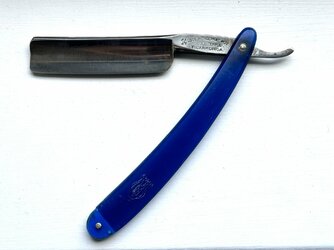Hi, I got this old Filarmonica 14 Doble Temple in the mail. My goal is to have a clean looking shaver. Not a perfectly polished collectible item.
I think of starting at grit 1500, then steel wool with Autosol and finish with cotton cloth.
What do you think? Should I go a grit lower?
Also not willing to remove the scales, rather protect them with tape.
Any suggestions appreciated.
I think of starting at grit 1500, then steel wool with Autosol and finish with cotton cloth.
What do you think? Should I go a grit lower?
Also not willing to remove the scales, rather protect them with tape.
Any suggestions appreciated.
